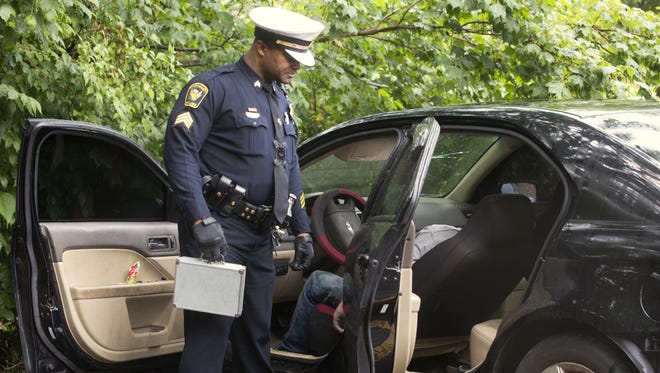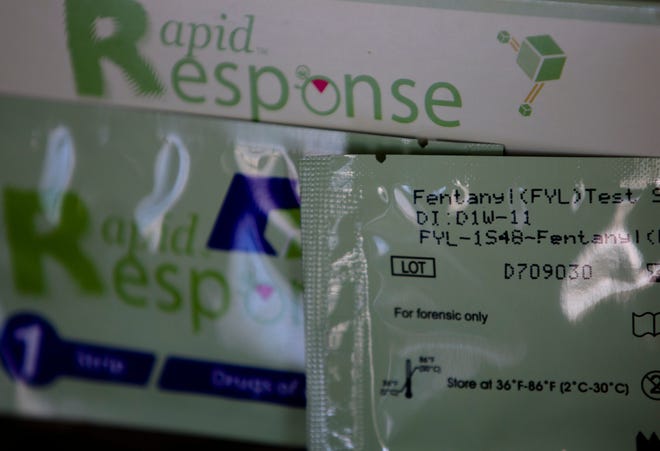Trending Topics
State of the Opioid Crisis: Hamilton County sees drop in overdose deaths during pandemic
From Terry DeMio,Cincinnati Enquirer;
Hamilton County, once an epicenter of the nationwide opioid epidemic, is likely to end up with a drop in overdose deaths in 2020, a year that saw record-high death tolls from overdoses across the nation during the novel coronavirus pandemic.
The Hamilton County Addiction Response Coalition started planning early in 2020 how to mitigate the damage from the COVID-19 pandemic lockdowns and forced isolation on progress that had been made in the opioid epidemic. The coalition is a partnership among public and private, health, government, first-responders and faith-based organizations and others.
Just weeks after the U.S. Centers for Disease Control and Prevention reported a record high number of overdose deaths, more than 81,000 across the country from June 2019 to May 2020, and weeks after Ohio's Scientific Committee on Opioid Prevention and Education reported a surge in Ohio, preliminary counts in Hamilton County's overdose deaths for 2020 dropped 11% from 2019.
The county's suspected overdose deaths – suspected because toxicology and other investigations are not yet finished – came in at 432 for 2020. That's down from 487 in 2019. And down from the highest ever tally, 570 overdose deaths in 2017, records from Dr. Lakshmi Sammarco, Hamilton County coroner show.

The Hamilton County Addiction Response Coalition took some credit Friday – but also released undeterred plans to continue its efforts –- as it discussed its 2020 annual report: State of the Opioid Epidemic.
"To have a trend that did not go up during the pandemic," said Hamilton County Commissioner Denise Driehaus. "It is an achievement. It is a sobering achievement because we lost … people." But she said the communities and members of the coalition "stood up," stayed "nimble" and responsive to the addiction crisis even while isolation took hold and services changed.
"Over 400 people dying from overdose is still unacceptable and means we have much more work to do," said Newtown Police Chief Tom Synan, a coordinator with the coalition.
Here's a glance at coalition efforts in 2020 and some of what it promises in 2021:
Prevention
Faith-based communities held parent training sessions and education on harm reduction, or strategies to minimize the health hazards and life hazards for people who use drugs. Also, Cincinnati Urban Minority Alcoholism and Drug Abuse Outreach Programs provided prevention classes for second- through fifth-grade classes. That was a result of a new coalition team, the African American Community Engagement Committee.
Interdiction
Law enforcement is seizing drugs on the street and arresting dealers. But the coalition's interdiction team also is providing and planning more help for those who are in recovery or active addiction. The Cincinnati Fire Department is developing a plan this year to allow medics to transport people who've stabilized from an overdose directly to treatment centers. The idea, said Cincinnati Fire District Chief Carstell Winston, is to give those who want help direct access to it rather than dropping them off at a hospital they might leave, without further treatment.
There's also a "Hotspot Initiative" response plan. The concept is to use technology to learn where more addiction-response help is needed, and then to deploy help directly to those areas, Synan said. The hope is that a better response will help "catch" people who fall out of systems of help and offer them assistance in re-securing that help or treatment.
Treatment
The Hamilton County Mental Health and Recovery Services Board received more than $6 million in federal funds provided through the State Opioid Response program. The funding, which extends through September, is supporting 23 projects of 11 providers. The projects include sustaining medication-assisted treatment, peer supports and recovery housing.
The grants will also provide new services. Among them, a program for youths whose family members have addiction disorders and a day program for homeless people who have opioid or stimulant use disorders.
Harm reduction
Hamilton County Public Health and an associate provider, the nonprofit Caracole, kept up engagement and services in 2020. Among new strategies, they developed a texting service so people could arrange for pick up or mail order of Narcan, the non-narcotic that reverses opioid overdoses. They also provided scheduled appointments for syringe services during the Ohio statewide "stay at home" mandate. They partnered with entertainment venues to distribute fentanyl test strips and provided a QR code for education.

Harm reduction efforts also extended to those in recovery, giving them a chance to help others. Toward that goal, Hamilton County Public Health, through a contract with Easter Seals, will continue enrolling people in recovery in state training to become certified peer mentors. So far, 41 are enrolled and 16 have finished their hours. Six of the new peer mentors are working in paid internships, and two have been offered full-time employment.
Synan said the coalition increased its meetings during the pandemic, analyzed what could happen to drug availability and worked with harm reduction providers to communicate with people who use drugs and to garner information that would help keep people safe.
"The epidemic continues, but Hamilton County is making ... progress," said Neil Tilow, co-chair of the coalition's treatment committee. "I think this is a direct correlation to working together and understanding each other."
See the whole report here: 2020 State of the Opioid Epidemic.
Read more from the Cincinnati Enquirer.
